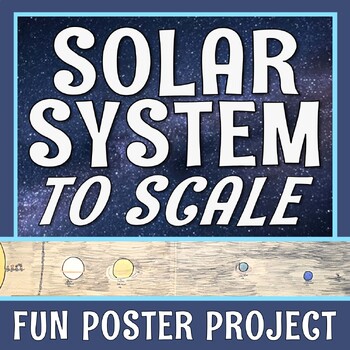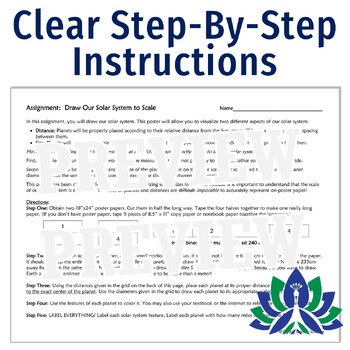Scale Properties of Objects in Solar System Activity Project POSTER PROJECT
- PDF
What educators are saying
Also included in
- SAVE 30%! This set includes 4 ENGAGING and RIGOROUS activities to teach the scale properties of objects in the solar system!This bundle includes:Scale Properties of Objects in the Solar System Informational Text*Scale Properties of Objects in the Solar System Online Activity*Draw the Solar System toPrice $12.99Original Price $18.96Save $5.97
- Save more than 40% off list prices! This bundle includes 8 high-interest activities on the universe, the sun, gravity, the solar system, galaxies, and astronauts. These space lessons are designed to add FUN and RIGOR to an existing astronomy unit! This Bundle Includes the Following:Galaxy Types ClaPrice $19.99Original Price $34.43Save $14.44
- Never search for "something to do tomorrow" ever again! This bundle contains PRINT AND GO lessons, NO PREP activities, LOW PREP labs, and ENGAGING articles to supplement and thoroughly enhance an Earth and space science course. Every included resource is easy to implement, standards-based, and high-Price $399.99Original Price $649.02Save $249.03
Description
Help students understand the true scale* and proportions* of our solar system with this clear, step-by-step astronomy activity! Students create a (really long!) poster of our solar system. NO CALCULATIONS REQUIRED!
⭐ Get this activity at a big discount in our Scale Properties in Space BUNDLE!⭐
In this activity, students will follow these steps:
- Tape 9 pieces of copy paper together to create a long poster OR use two 18" x 24" poster papers that each have been halved. (Directions provided.)
- Follow specific, provided measurements to create planets that are the correct diameters and distances from the Sun.
- Color the planets according to the provided information.
- Label all space objects.
*PLEASE READ BEFORE PURCHASE: A note regarding the accuracy of the scale of this drawing... The scale of the distances of each planet from the sun is correct, and then separately the scale of the planet's diameters is correct. However, combined in this drawing, the planet diameter measurements and distance from the sun measurements aren't the same scale. So, this project creates a MORE REALISTIC VIEW of the solar system than students are used to seeing, but it is not mathematically perfect. A drawing with the diameters AND distance from the sun being on the same scale would make drawing it in a classroom impossible so this project is a happy compromise.
Teacher Notes:
- This resource is NOT editable.
- Related NGSS Standard: MS-ESS1-3
- NGSS Science & Engineering Practice: Developing and using models
- NGSS Science & Engineering Practice: Using mathematics and computational thinking
- Get this activity at a big discount in our Scale Properties in Space BUNDLE!
⭐⭐⭐ Click here to get 5 FREE EARTH & SPACE SCIENCE lessons! ⭐⭐⭐








